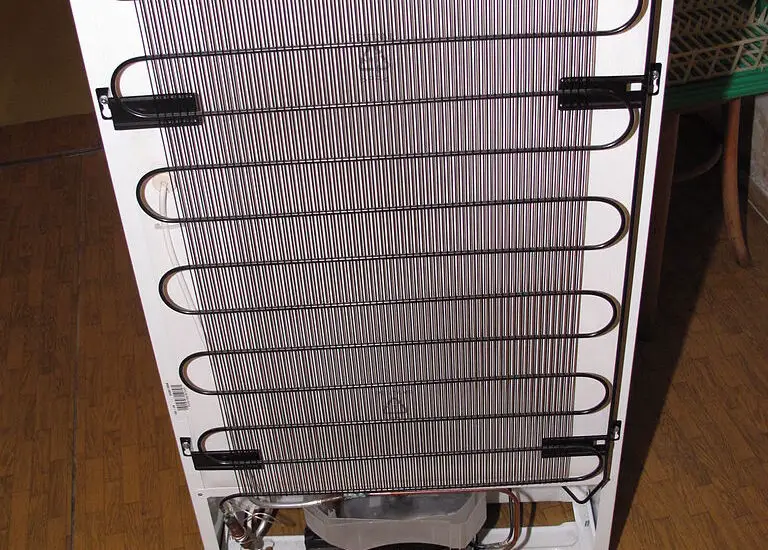How does a condenser work, you ask? This artilc will comprehensively answer this question and more.

Table of Contents
Understanding Condensers: The Basic Concept
We all like a cool breeze on a hot day, right? Well, the condenser is the metaphorical cool breeze for a variety of systems.
What is a Condenser?
A condenser, put simply, is a device that cools a substance from its gas phase to its liquid phase. Think of it like a hardworking marathon runner who starts off all hot and bothered but gradually cools down after a refreshing drink. They come in all sorts of shapes and sizes, each designed for a specific type of system.
The Role of a Condenser
So, what’s the big deal about a condenser? These little workhorses are found in anything that requires cooling. Ever put your hand at the back of a fridge? That warm air is the result of a condenser doing its job. They’re not just in fridges, though. You’ll find them hard at work in air conditioners, power plants, and even in some car engines.
How Does a Condenser Work?
Ever seen a relay race? You’ve got runners passing batons, right? Well, in a nutshell, that’s kind of what a condenser does with energy.
Basic Working Principle of a Condenser
A condenser works by extracting heat from the gas and expelling it. It’s like a hot potato game – the condenser gets the heat and then passes it off as quickly as it can. By doing so, the gas cools down and turns into a liquid. Simple, huh?
Key Components of a Condenser
A condenser might look like one seamless unit, but it’s actually a team of components working together in harmony. Let’s break it down into its primary parts:
Compressor: The compressor is the captain of the team. Its role is to pressurize the refrigerant, heating it up in the process. You could say it’s like the pace-setter in a race, getting things started.
Condenser Coils: These are the long, winding paths the refrigerant travels through. They offer a large surface area for the refrigerant to disperse its heat, kind of like a marathon runner spreading out their energy over a long race.
Fan: The fan plays a supporting role, but it’s by no means less important. It blows air over the coils, helping to carry away the heat and cool the refrigerant faster. It’s like the cool breeze on a runner’s back, providing that much-needed relief.
Detailed Breakdown of the Condensing Process
Picture a production line in a factory. Each worker on the line has a specific job to do, right? The same applies to the condensing process in a condenser.
The Inlet Phase
This is the beginning of the condensation process. Hot, high-pressure refrigerant, fresh from the compressor, enters the condenser. It’s akin to a runner at the starting line of a race, full of heat and energy, ready to be expended.
The Condensing Phase
The hot refrigerant then begins its journey through the condenser coils. As it moves, the fan blows air over the coils, taking away the heat.
This process cools the refrigerant and changes it from a gas to a liquid. This phase is like the midway point in the race, where the runner begins to feel the strain and starts to cool down.
The Outlet Phase
After the refrigerant has cooled and transformed into a liquid, it leaves the condenser. The liquid refrigerant is now ready to be expanded and evaporated, starting the cooling cycle anew. This phase is like the end of the race where the runner, having spent all their energy, cools down and relaxes.
Check out these other related articles…
Condenser Coil in Refrigerator: Your Ultimate 411 Guide
Dirty Condenser Coil Symptoms: Comprehensive 411 Guide
Condenser Heat Pump: Your Comprehensive Guide
Condenser and Evaporator: The Ultimate 411 Guide
Condenser Uses: Your Quick 411 Guide
Types of Condensers and How They Work
Did you know there are different types of condensers? Each type has its own way of doing things.
Air Cooled Condensers
Think of air-cooled condensers as those athletes who rely on the natural breeze to cool down. In these types of condensers, the hot refrigerant moves through the condenser coils while a fan blows air across. The fan helps remove the heat from the refrigerant, cooling it down and transforming it from a gas to a liquid.
These condensers are quite popular due to their relative simplicity and efficiency in low to moderate-temperature conditions.
Water Cooled Condensers
Water-cooled condensers, on the other hand, are like athletes who prefer a good water spritz to cool down. They use water instead of air to remove heat from the refrigerant. The hot refrigerant flows through the condenser coils while water circulates around the coils, effectively transferring the heat from the refrigerant to the water.
These condensers are typically more efficient than air-cooled types and are more commonly used in larger, industrial settings where more cooling power is needed.
